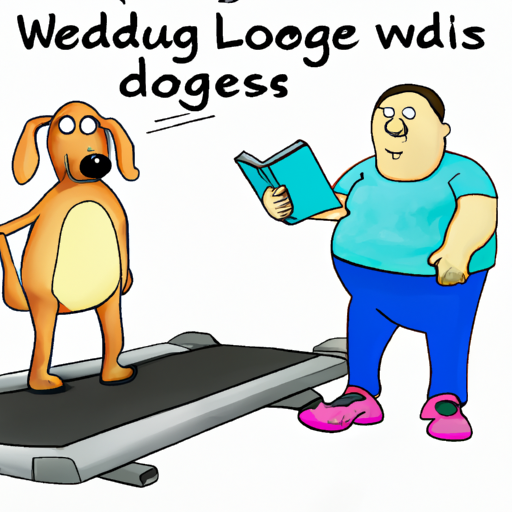As a caregiver, it’s natural to want the best for your loved ones, including your loyal canine companions. One important aspect of ensuring their health and wellbeing is maintaining their weight. Obesity in pets, like in humans, can lead to a number of health problems. Here’s how you can help your dog lose weight and lead a healthier, happier life.
Understanding Your Dog’s Weight Problem
Before you start on this journey, it’s important to understand the root of the problem.
- Overfeeding: This is the most common cause of obesity in dogs. Many owners do not realize the amount of food their pets actually need, leading to overfeeding.
- Lack of exercise: Dogs need regular exercise to maintain a healthy weight. A lack of it often contributes to weight gain.
- Medical conditions: Some diseases and conditions can cause weight gain in dogs. It’s important to rule these out with a vet check-up.
Assessing Your Dog’s Current Weight
To help your dog lose weight, first, you need to determine their current weight and compare it to their ideal weight. Your vet can do this, but you can also do a rough assessment at home. Your dog is likely overweight if you cannot feel their ribs easily or if they have a sagging stomach.
Setting a Weight Loss Goal
Next, set a realistic and healthy weight loss goal for your dog. This should be done in consultation with a vet. Remember, the aim is for your dog to lose weight gradually, not suddenly. A loss of about 1-2% of their body weight per week is generally recommended.
Designing a Diet Plan
Designing a diet plan is one of the most critical steps in helping your dog lose weight.
- Reduce calorie intake: Start by cutting down the amount of food you give your dog by 10-20%. This reduction should be from their current food intake, not the recommended amount for their ideal weight.
- Choose low-calorie, nutritious food: Some foods are low in calories but high in nutrients. These are ideal for weight loss.
- Control treats: Treats should make up no more than 10% of your dog’s daily calorie intake.
| Food | Calories |
|---|---|
| Dry dog food | 250-500 kcal/cup |
| Wet dog food | 150-350 kcal/can |
| Dog treats | 10-100 kcal |
Incorporating Exercise
Incorporating exercise into your dog’s routine is just as important as diet for weight loss.
- Regular walks: Start with short, regular walks and gradually increase their length and intensity.
- Playtime: Playing fetch or tug-of-war is a great way to get your dog moving.
- Swimming: If your dog likes water, swimming can be a great low-impact exercise.
Regularly Monitoring Progress
Monitor your dog’s progress regularly. This will not only show if your plan is working but also motivate you to continue. Weigh your dog every 1-2 weeks and adjust your plan as necessary.
Consulting a Vet
Remember, you’re not alone in this journey. Your vet is there to help you. Regular vet check-ups are important to ensure your dog is losing weight healthily.
FAQ
Q: How do I know if my dog is overweight?
A: If you can’t feel your dog’s ribs easily or if they have a sagging stomach, they are likely overweight.
Q: How much weight should my dog lose per week?
A: Generally, a dog should lose about 1-2% of their body weight per week.
Q: Can I just feed my dog less of their current food for them to lose weight?
A: Simply feeding your dog less might not provide them with the necessary nutrients. It’s better to consult a vet and switch to low-calorie, nutritious food.
Q: How much exercise does my dog need?
A: The amount of exercise depends on your dog’s breed and age. However, generally, a dog should get 30 minutes to 2 hours of exercise per day.
Q: Should I stop giving my dog treats?
A: Not necessarily. Treats should make up no more than 10% of your dog’s daily calorie intake. Choose low-calorie, healthy treats.



